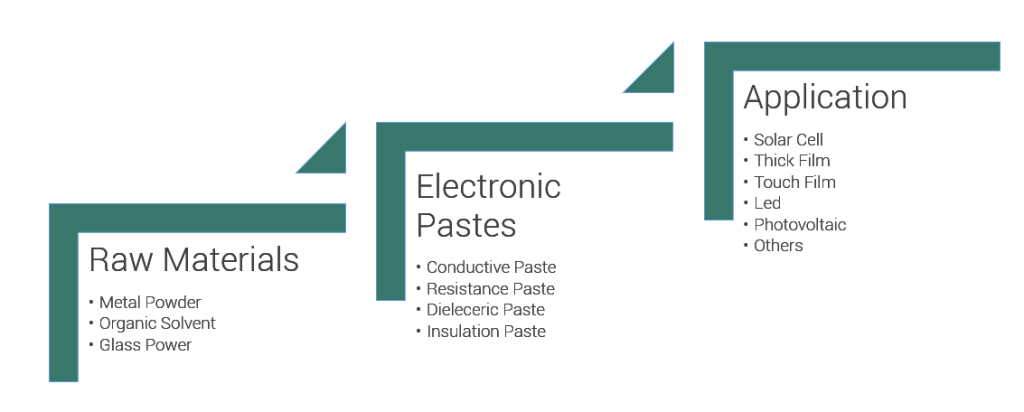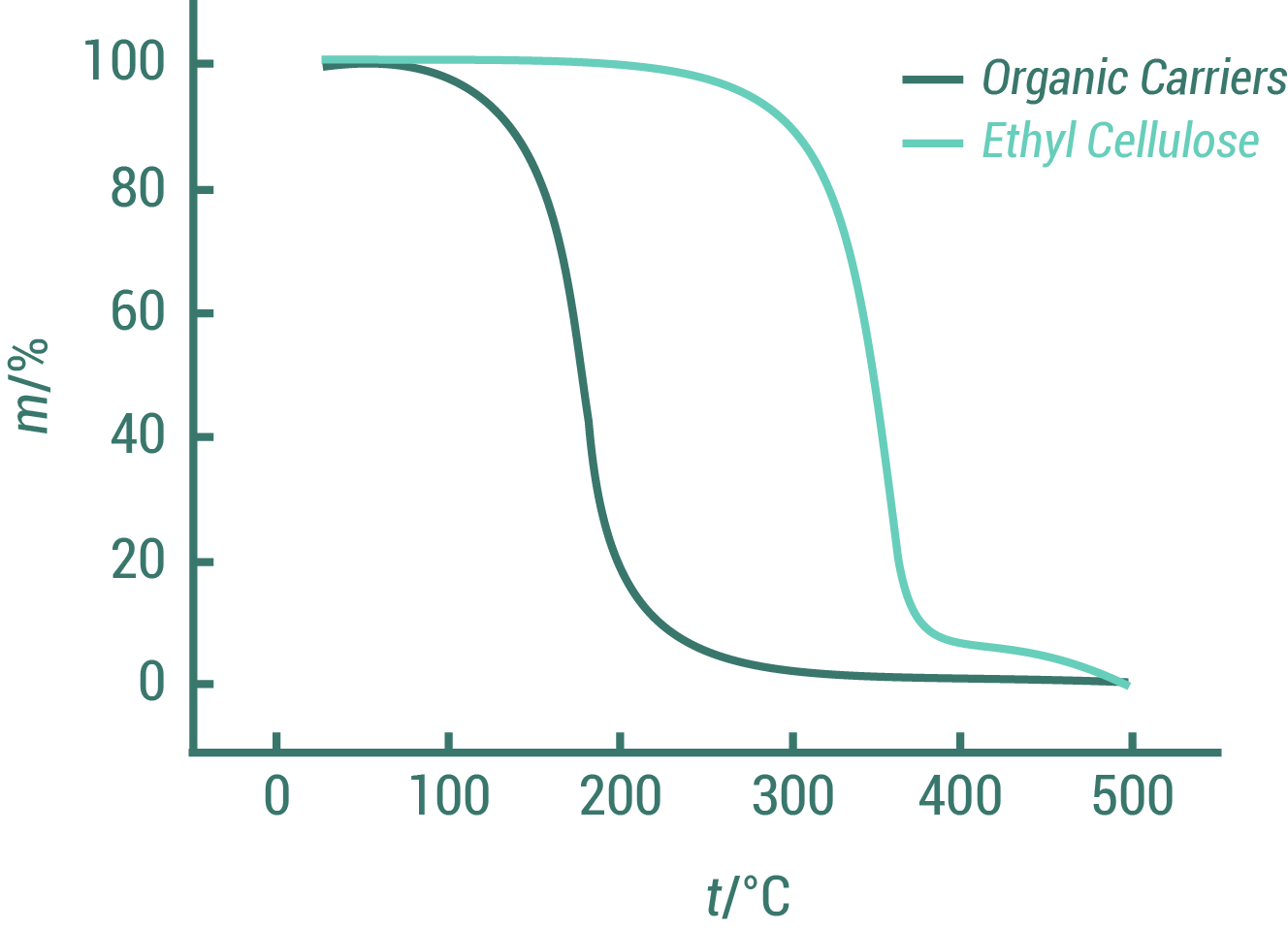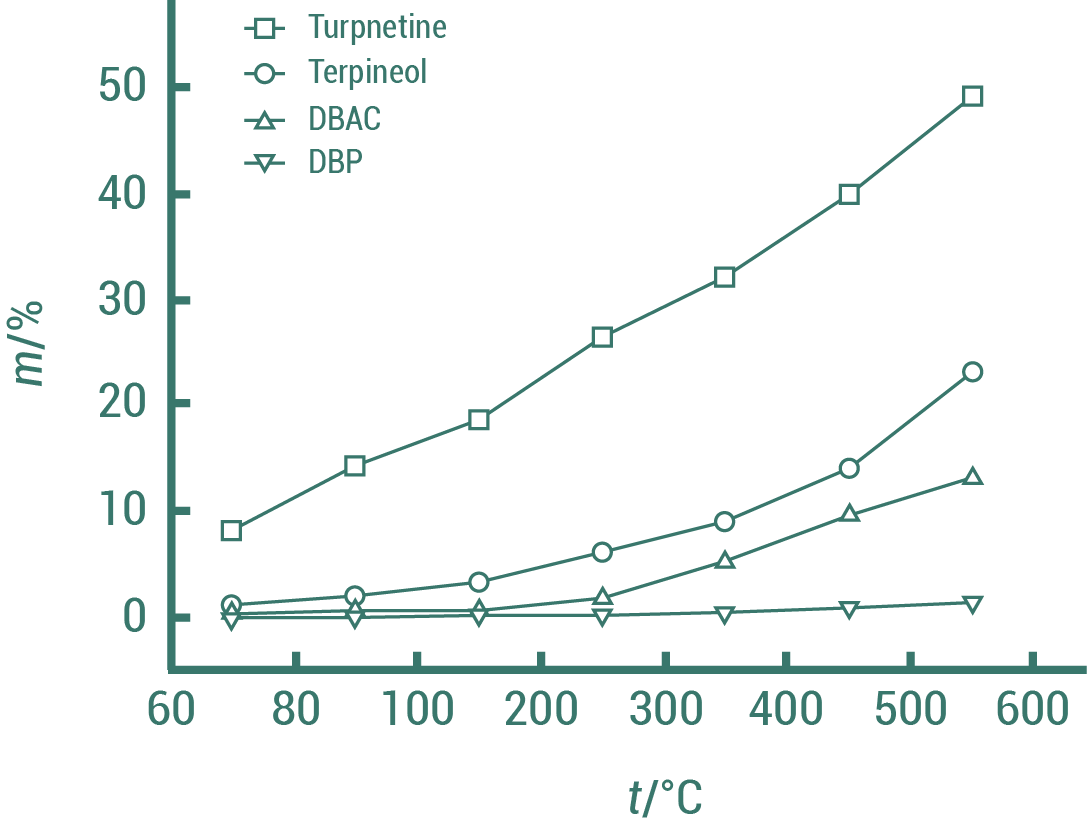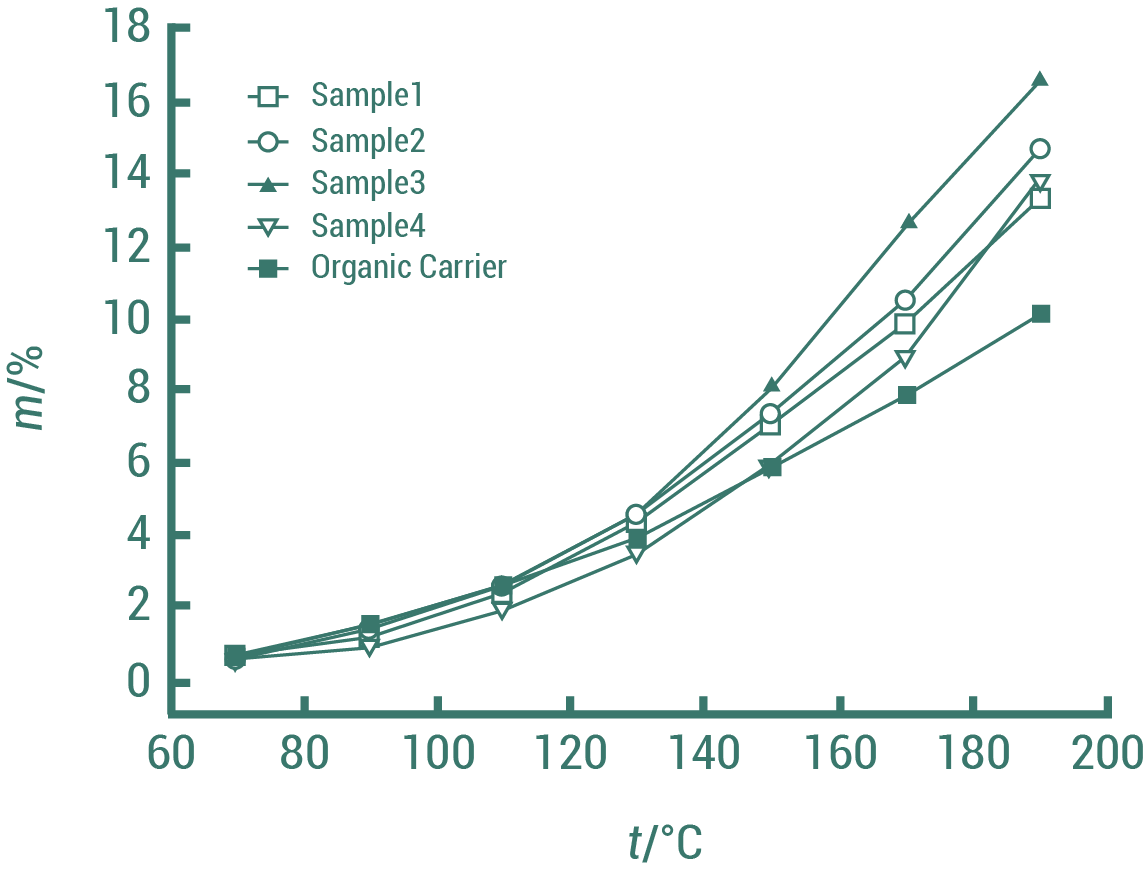Terpineol based SOLVENTS
FOR ORGANIC CARRIERS OF ELECTRONIC PASTES
SUPPLY CHAIN
Organic carrier is the basic material of electronic pastes. They are identified as volatility carrier and non-volatility carrier. As the volatility performance, this specification influence rheology and initial adhesive attraction to electronic pastes.
There are some typical carriers be used in formulas, include Ethyl Cellulose (EC), Nitrated Cellulose (NC), PVA, PAA, polyurethane emulsion (PUE), PVB, PAM, etc. Binders usually use Pine Oil, Turpentine, EC-terpineol and Acrylic Resins. In these binders, EC-terpineol is the main stabilizer-solvent system. (Shiyong Luo, 2007) The viscosity of electronic pastes was controlled by Ethyl Cellulose on mass fraction. As tests resulted that when the EC is about 5%, the formula works well.
FEATURE
In the stabilizer-solvent system, we often consider the effect of volatility on solvent formulas. Pure solvent formulas often show a high volatilization, this feature makes unsteadiness on pastes.
A high-speed volatilization will increase the viscosity, reduce rheology that screen is easy blocking. A too slow performance will delay the painting process, and inks would not easy drying that produces rejected. If the volatility focuses on a range of temperature, the film chaps and produces air hole after the paste sinter. (Shiyong Luo, 2006)
So how to choose the right solvent is the key to improve the performance of electronic pastes.
Electronic pastes are conducting conductive particles. The based resin types, grain size, and contents of metal ingredients, each factor will influence the conductibility. (Dandan Wu, 2008) Terpineol is the main solvent, dissolves tackifiers and organic ingredients.
The paste formulas must be satisfied the customer demands. Different of manufacturers have their specification in adhesion and tenacity. Adhesion ability of electronic pastes test with based resin and inner stress of contact surface. If the inner stress performs a too high level, the thermal coefficient of expansion will not satisfied in semiconductor devices.
Some research results that the contents of the organic carrier in electronic paste formulas will affect the cut force. ( Weiping Gan, 2007) When the contents of carrier increasing, the cut force of sinter film will reduce due to the shrinkage ratio. If formulas can improve this shrinkage ratio, it can improve the compatibility in the film. But if organic carrier contents too low, the paste will blocks screen.
Performance
The volatilization loss of pure solvent formulas was higher than complex solvent formulas. Due to the difference of boiling points of pure solvents, which always easy volatilizing the carriers. If we choose complex solvent, control the volatilization performance through adjust contents of volatile substances, such as Turpentine, Terpineol, Diethylene glycol monobuthyl ether acetate (DBAC) or Dibutyl phthalate (DBP). The organic carriers show a character of pseudoplastic fluid and reduce volatilization loss.
In the EC-terpineol stabilizer-solvent system, we can improve the volatilization feature by adding Turpentine, Terpineol, DBAC or DBP. There is a referrible proportion is DBAC by 28.5%, Terpineol by 57%, DBP by 9.5% and Ethyl Cellulose by 5%. (Shiyong Luo, 2006)
The mass loss of Ethyl Cellulose was 91.66% at 325°C to 375°C. Carrier was volatilized at the temperature range of 150°C to 200°C, the mass loss was 93.88%.
INNOVATION & MARKET FORECAST
Global E-inks market value was USD 1.6 billion in 2014. The CAGR is forecast 2.2%, grown to USD 2.3 billion in 2023. ( Source: IDTechEx)
The 2014 market value of printed electronics in China was USD 1.15 billion, it is forecast to USD 16.7 billion, CAGR by 58%. ( Source: n-tech Research)
The main photovoltaic pastes are back Ag paste, silverback paste, and front silver paste. According to the forecast for photovoltaic installation in 2015, the market volume of Ag paste was 30k tons, the Silver paste was 160k tons. The total volume of the Chinese market in the world by 36%. (Source: xincailiao.com)
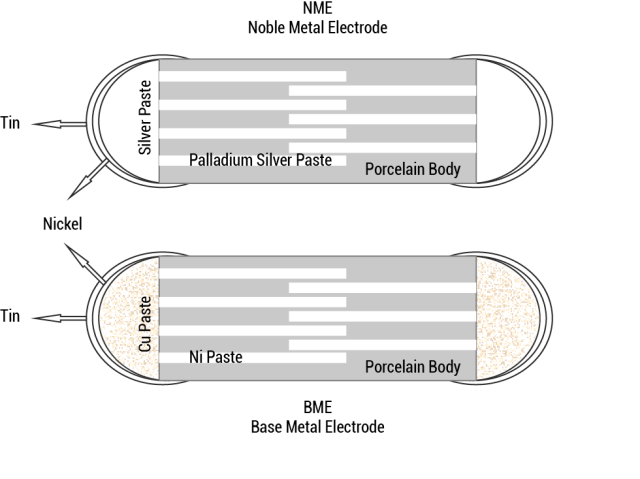
- Reduce manufacture cost, use BME replace NME.
- Improve performance.
- Eco-friendly, limited to use BBP, DBP, and unleaded formulas will are the industry standard.
Get the Quote
Contact our sales team to get the latest product specifications and product quotes.
